The Design Vision team is in charge of prospecting new mobility scenarios and address ethical decision making within the Product Design team. As a service designer, I had the opportunity to contribute to design fiction, sustainable IT, strategy and user experience projects, among which :
Mobility scenarios for 2030
Goal: anticipate the evolutions of mobilities.
The workshop offered to the Customer Experience team (CX) aimed to imagine the impact of ten forces of change (climate emergency, emerging hyper reality, inflation and limited ressources, …) on mobilities in the year 2030. Thanks to an externalities analysis template developped by Designers Éthiques, we collected 200 potential occurences that I then analyzed, in order to extract a list of impacts for each of the forces of change.
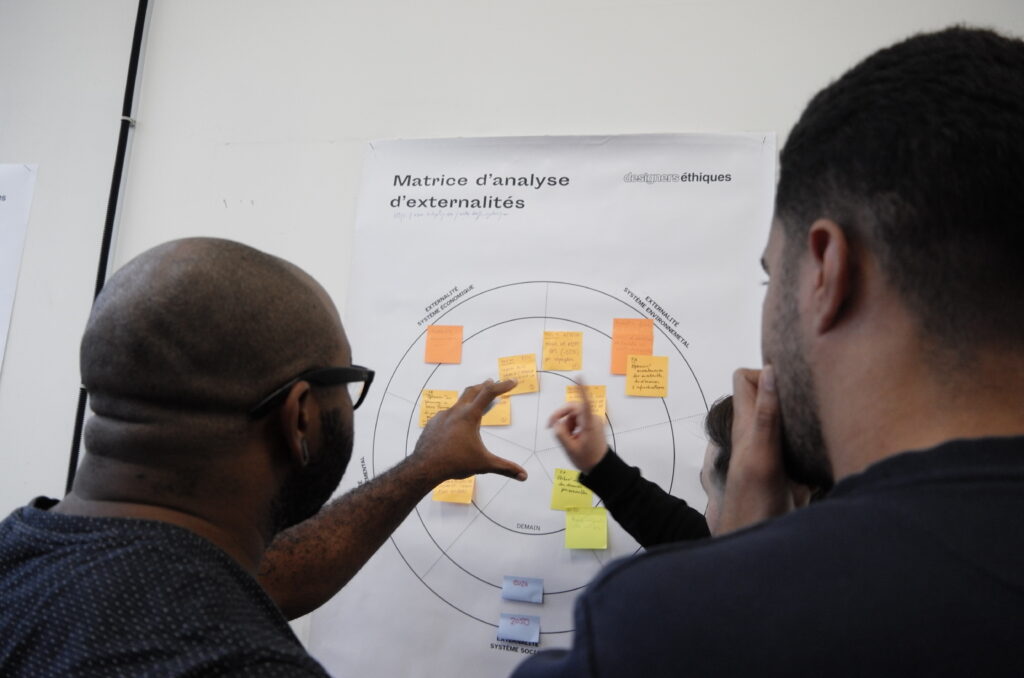

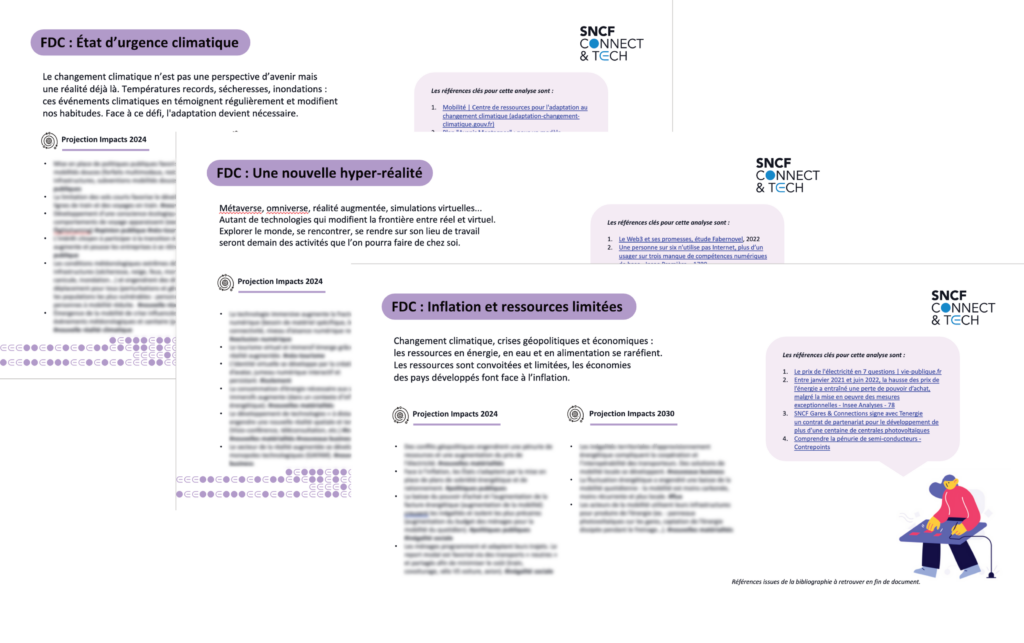
Sustainable Design Principles
Goal: write a set of Sustainable Design Principles for the product team.
Following the study of a wide panel of referentials and reports (RGAA, Privacy by design, …) and expert interviews, I established four directing principles (sustainability, universality, confidentiality & free will) which were each subdivided into actionable instructions in order to enable action.
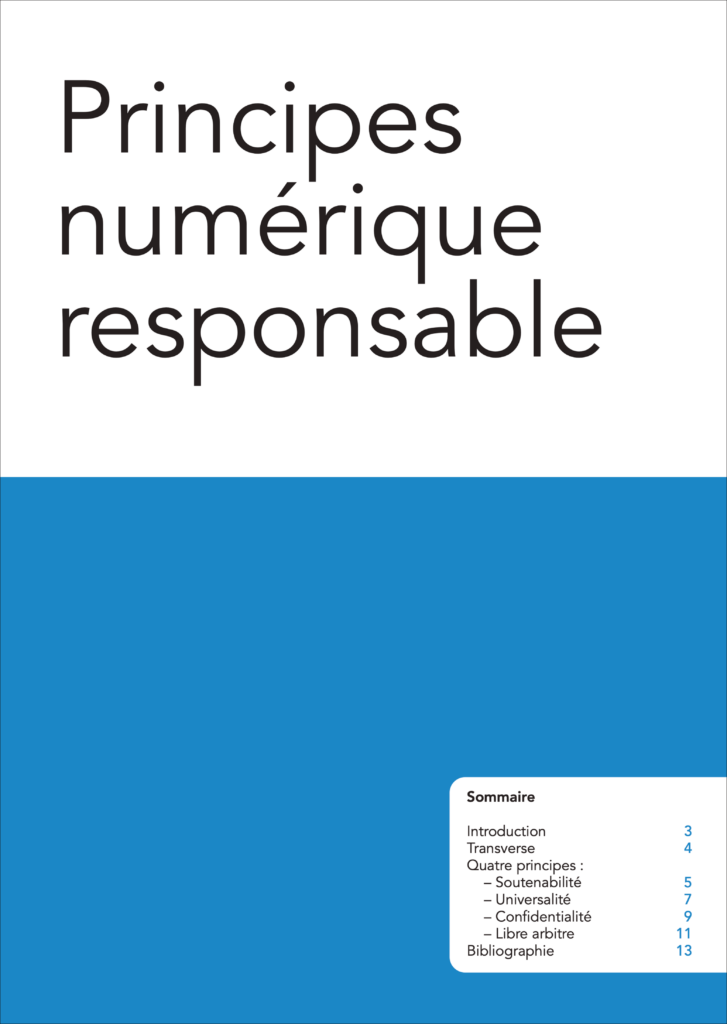
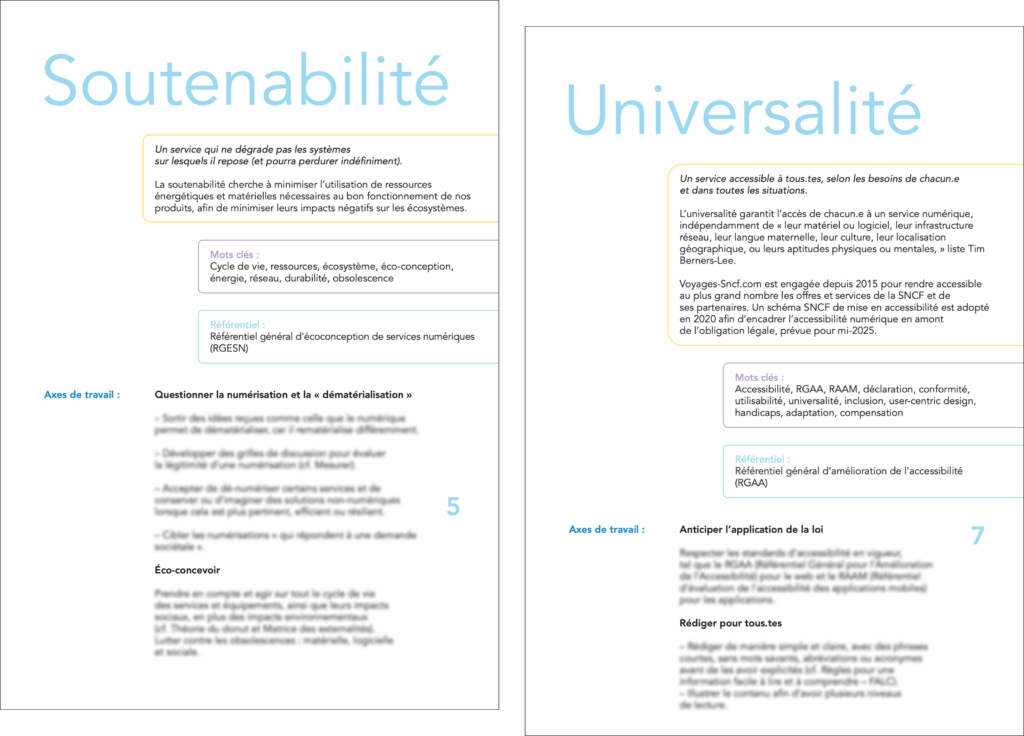
Overview of user knowledge
on SNCF Connect’s search experience
Goal: establish an overview of the user’s search experience since the launch in january 2022.
In order to establish a vision of the desired search experience, we started establishing a state of the art of all available knowledge. After collecting all available data and each stakeholder’s point of view, I crosschecked sources in order to extract precise insights that were then recontextualized within the user journey.
The next phases — ideation, prototyping, deployment — will build upon the foundations laid by this document.
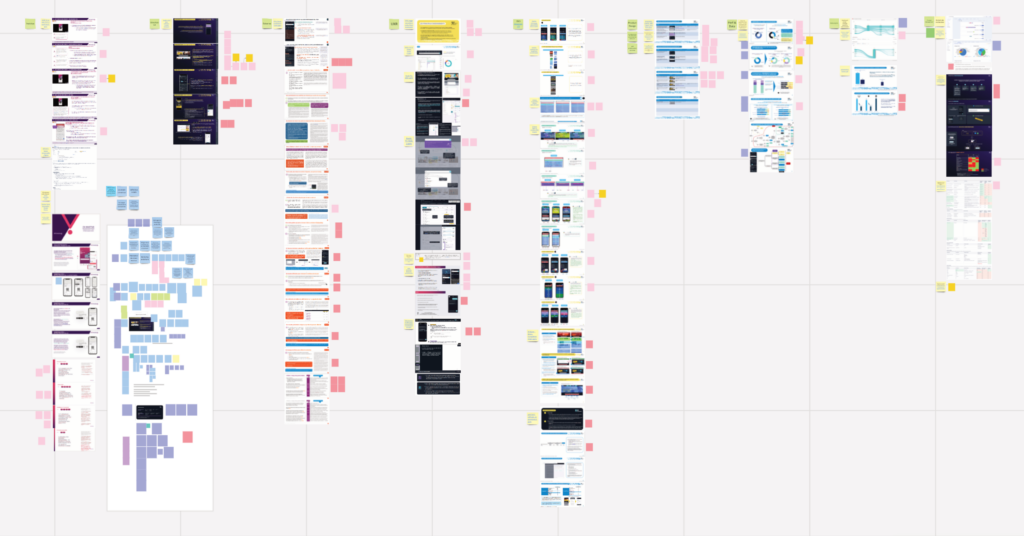
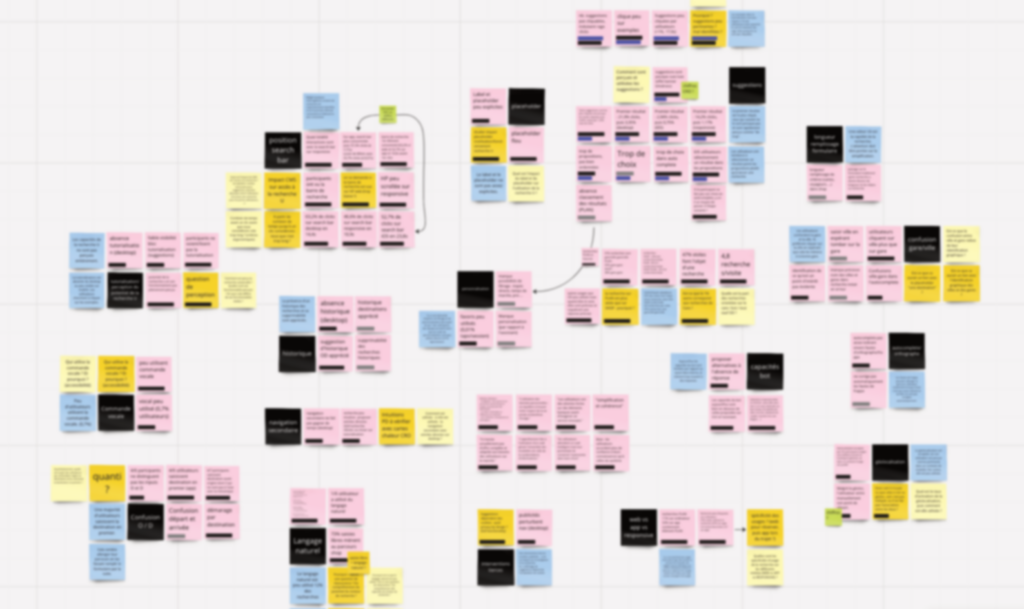
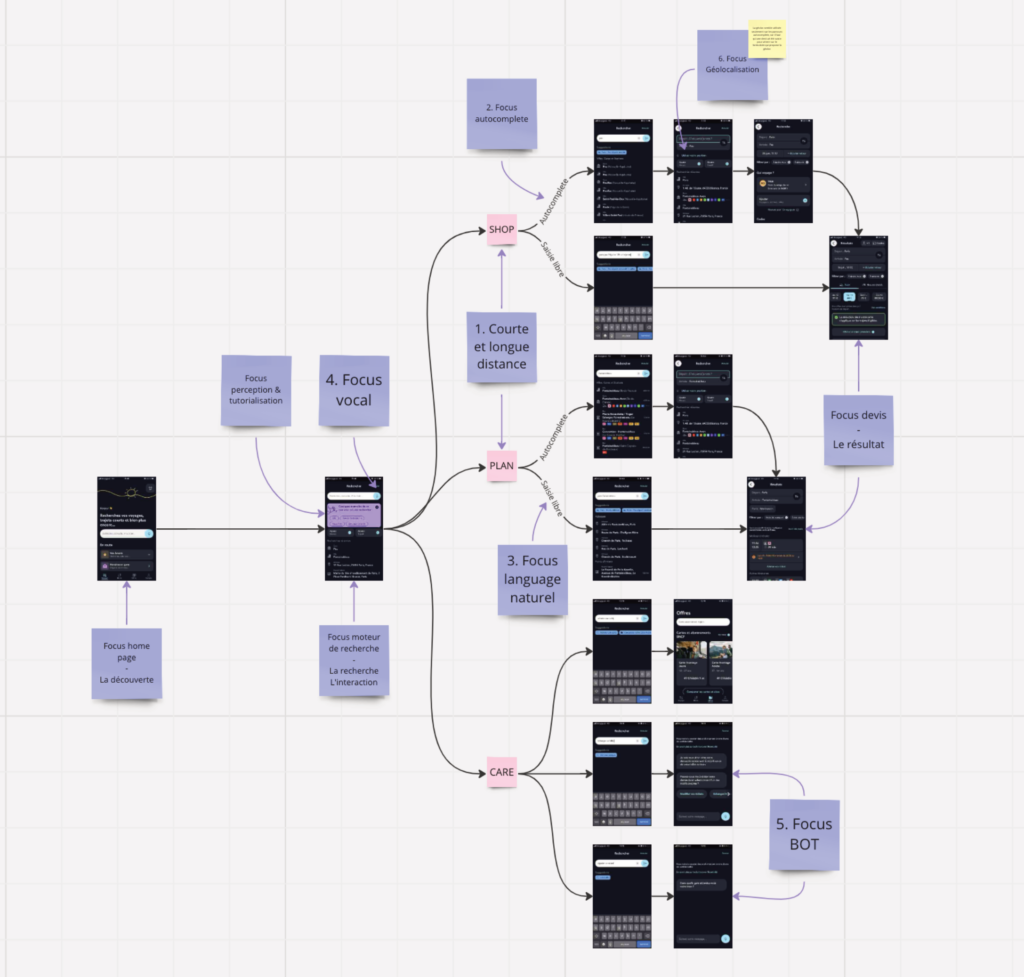
Low Connect
Goal: imagine the intersection between SNCF Connect and low-techs.
While 85% of a smartphone’s impact lays in its conception, it appears necessary to make sure our services don’t contribute to planned obsolescence. In order to do so, using simpler technologies such as Command Line Interface (CLI), which is independant from an operating system, can enable the service’s compatibility with past and future devices. Furthermore, simpler technologies being lighter, they also increase the service’s accessibility to people with a poor internet connection, such as travelers on trains!
Methodology:
1 – Prioritize the needs adressed by the service
2 – Establish the user journey and tree diagram
3 – Program using Command Line Interface
4 – Pitch the prototype to the executive board !
Role : project leader of a 5 people team (2 designers and 3 developpers)

